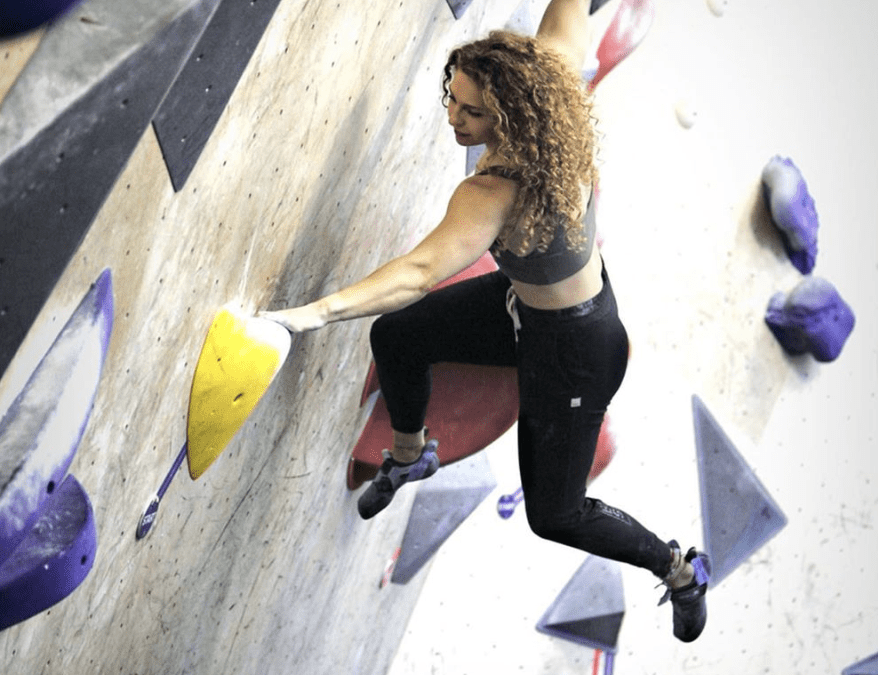Training Tuesday: Use your Hips!
Leading with the hips to climb competition-style boulder problems

The last decade has brought a lot of changes to the world of climbing, but perhaps none are as noticeable as the change in setting itself. Though there are a million ways to set a route, the style with which setters put holds on a wall has changed dramatically from what it once was. Today, a comp climber’s strength regularly plays second fiddle to the movement of their hips.
What used to be defined by hard moves on regular holds has changed to dynamic and technical movements that would have been unimaginable before. Though the setting style has changed, the new “parkour-like” style of gym climbing is difficult to adapt to. This is because the movement is all in the hips. So how do you get better at using your hips to climb?
Momentum
“Using your hips” primarily breaks down into the use of momentum. Competition climbers are especially good at using their momentum to get to the top of the wall, and they have to be. Some modern gym routes are set in a way that is impossible to ascend without the use of momentum. Think of your hips as your centre of gravity. Wherever your hips swing, in climbing, the rest of your body will want to go. To try this concept out at home, simply stand up and jump from side to side. You will notice that you are leading with your hips to do this. As roughly the mid-point of your body, your hips act as the rudder that will steer your body during a dynamic movement. Try applying this concept to the wall.
Technique
How? Well, you’ll have to go to a wall to try it out. Unlike strength training, it is difficult to train this technique anywhere besides the wall. That said, it is worth watching a competition like Bloc Shop Open or the recent Pan-American Finals to study the pros use of their hips. Though their boulders may be harder than what you’ll find in the gym, the concept is the same. Coordination is coordination, the pros are just doing exceptionally difficult coordination on poor holds.
After you have studied up, head to the wall and begin practice. Ideally, your gym will have coordination style boulder problems to practice on, at which point, strive to complete the movement. If you do complete the movement, repeat it until you understand how it is done. Then translate it to the next problem. You should be aiming to have your body shift from one position, through the coordination sequence, to the final position without any serious halting of movement.
If your gym does not have this sort of boulder problem, or you are unable to complete the coordination boulder problems, then get on a route beneath your limit and try climbing it without bending your arms. Strive to swing your hips to generate momentum between holds. With enough generation, your hips will take you from your start point to the next hold without having to pull. Complete as many boulder problems as you can without pulling with your arms. A slight bend in the elbow is key to avoiding injury.
Progression
After you have completed either of these technical exercises, you should have a basic understanding of how hip movement can get you to the top of a boulder problem. At this point, it is useful to begin creating your own boulder problems on the holds already in the gym. A spray board at the back of your facility can also help. Begin playing around with various movement types. Think of it like flipping a pancake in a pan. It is difficult to flash that sort of balancy movement, but with enough trial an error, you will learn how to flip that pancake in good style. Take this approach and apply it to exercises like the moon-kick and the two-handed dyno.
Many thanks to Philip Quade for the featured photo.


